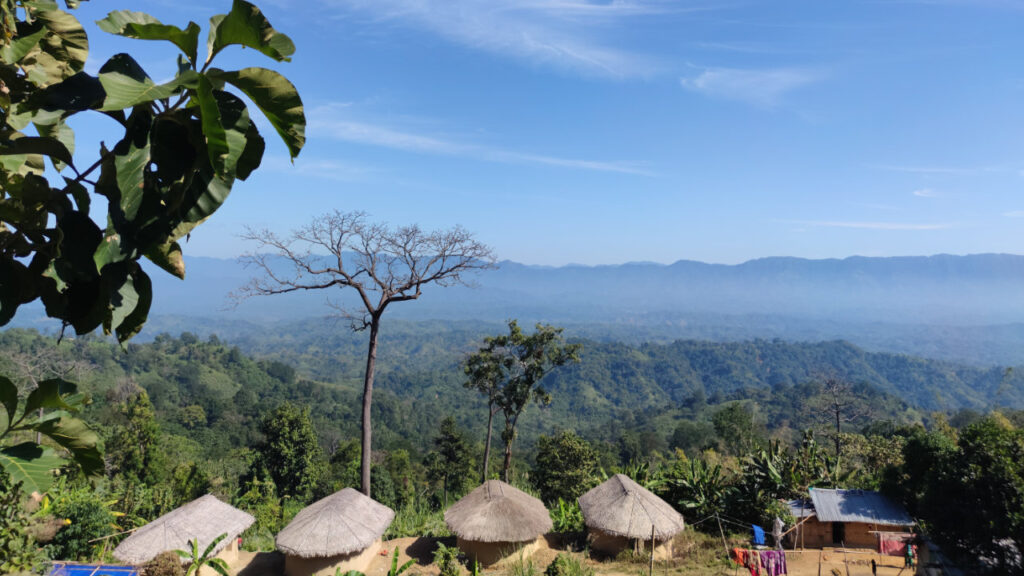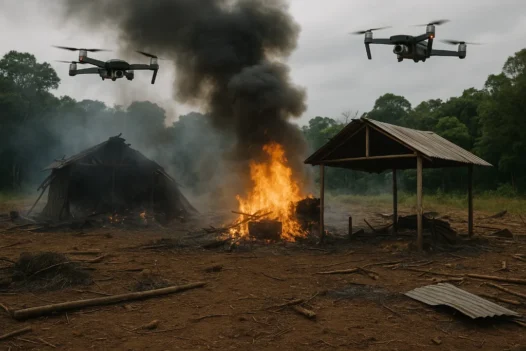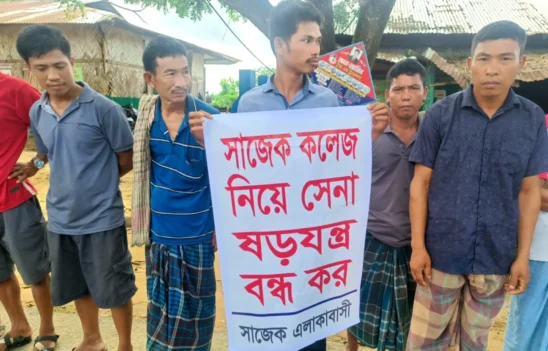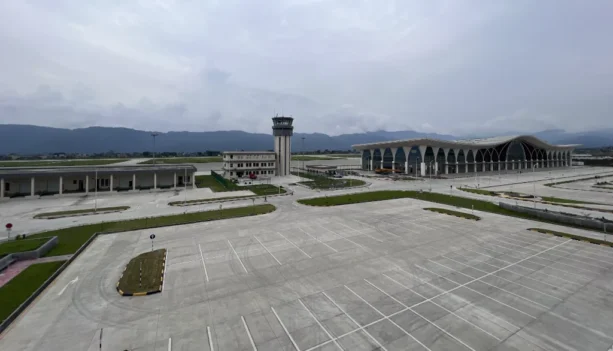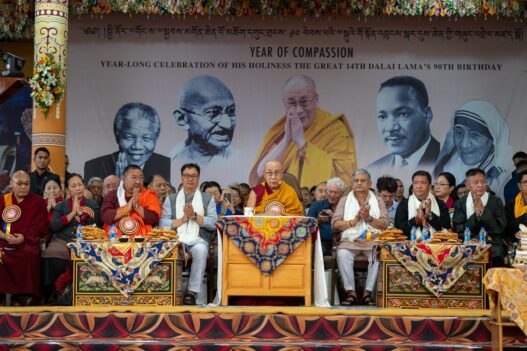The North Eastern Indian ‘borderlands’ are a creation of imperial history and post-colonial tensions, resulting in hard frontiers, a largely extractive economy, and a weak consciousness as a region based on its unique characteristics. It is possible to change this by protecting the region’s huge environmental wealth, enhancing the productivity of its small farms, and by a shared vision and enlightened leadership for the region as a whole.
My felicitations to the founders for launching this inaugural issue of ‘The Borderlens’ dedicated to the problems and perspectives of the eastern Indian borderlands. Without getting into the question of whether these ‘borderlands’ correspond with what we otherwise call the North East of India or NER, such a platform is badly needed. Either way, both are products of history, specifically colonial history and partition, with the centre in Delhi as their reference point.
Historical background
In pre-colonial times, we could talk of these areas as being on the fringes of Indian history, and of the hill areas of the region as being aloof or apart from the kingdoms in the plains – in different degrees, or even as ‘ungoverned’ spaces as the scholar James. C. Scott has called it. But its history was not static. They may not have been major arteries of trade between South Asia, China and South East Asia, but they were not ‘borderlands’ simply because the nation-state had not yet appeared in the region, and frontiers were elastic with no strictly defined borders. There were population movements and military campaigns such as that which brought the Tai Ahoms and others to the region; and webs of relationships between Burma, the Arakan, Assam, Manipur, Tripura, Bengal, Tibet, the Bay of Bengal coast and eastern India. Under the British, large areas of these ‘borderlands’ were only loosely administered, serving as buffers between competing imperial powers or as resources for the imperial economy and trade through tea and other commodities.
The idea of the North East as ‘borderlands’ only came about with the end of colonialism and the emergence of nation-states with hard boundaries. Independence left the region politically partitioned, and economically landlocked, deprived of natural outlets to the Bay of Bengal; physically connected to the rest of India, to which it is increasingly integrated through the strategically vulnerable Siliguri corridor (captured by the imagery of the ‘Chicken’s Neck’); and largely separated from its immediate neighbours as a result of their own troubled histories and inter-state conflicts of which the 1962 India-China war has left a particularly troublesome legacy.
International and inter-state boundaries within the North East that emerged post-independence to meet ethnic and regional identities and aspirations have added to its administrative fragmentation and sit uneasily with the cross-border ethnic palimpsest of the region. These have been further compounded by fears of uncontrolled migration from outside that threaten to alter local demography, identity, land ownership and balance of power. In addition, the hard frontiers of modern nation-states in conflict or constant competition with each other are at cross-purposes with the physical geography, natural drainage and natural economy of the region which bind the Himalayas, the river basins and plains, the Sunderbans delta, and the Bay of Bengal into a single ecological and economic whole.
All these have seriously affected the region’s economic viability. But that is not the sole reason why a region that is naturally bountiful in the most basic of natural resources – land, water, sun, forests, natural beauty and biological diversity from which all wealth derives – let along mineral and cultural wealth, is net dependent on the Centre. Failures of vision, imagination, politics and administration too have contributed hugely.
Ways of Looking: Border-lenses
There are several ways in which Indians in general and local populations look at the region. At the risk of over-simplification, at the national level, there is a ‘security lens’ that tends to look at the region from a national or internal security point of view with a centralizing and state-centric bias or as somehow less integrated to India emotionally partly on grounds of ethnicity and religion, and therefore requiring extra measures like the Armed Forces Special Powers Act (AFSPA). At the popular level, there is a ‘romantic’ lens that sees the region and people at the exotic end of India’s great biological and cultural diversity; but there is also an ethnocentric ‘mainland’ lens that looks at the region as alien to their idea of ‘India and Indians’.
Within the region, the dominant lens is a parochial and protective ethnic and tribal lens that sees Indians in general as ‘outsiders’, other local ethnicities as rivals, and immigrants as unwelcome. But there is a large section including those most politically, economically and intellectually integrated to India who unwittingly look at the region from a refracted ‘national’ lens – internalizing, but at the same time, resisting, much of the discourse around the ‘North East’ and ’borderlands’. Not surprisingly, it is this segment that is the most attached and most conflicted in its relationship with India. Each of these ‘lenses’ is at a tangent from the other. They hardly intersect, nor do the region justice.
Alternatives
What is missing is a holistic native vision of the North East based on its unique attributes, livelihoods, and produce; an indigenous view of the region as a whole with physical and cultural integrity of its own; and the political will and organisations to translate this into a coherent vision of political, economic, and ecological development for a more sustainable future for the North East. Such a vision can offer a future for the North East well connected to the rest of India and its neighbourhood, breaking its heavy financial dependence on the Centre that deprives it of genuine agency and the ability to stand on its own feet and serve as a bridge between South and Southeast Asia. In spite of a number of central initiatives and institutions like the North East Council and DONER, and India’s “Look East” and “Act East” policies, the North East itself does not seem to have taken ownership of the region as a whole.
Central to this is a regional development strategy that augments its natural and agricultural resources rather than depletes them through extractive industries inherited from the British and expanded and aggravated post-independence under pressures of development, commercial exploitation, and livelihood. These industries, originally based on timber, rice, coal, oil, and plantations, among others, served imperial interests, depended disproportionately on labour and management from outside, and were sustained by external markets underpinned by imperial domination and transit through present-day Bangladesh. None of these (except the last) were or are sustainable or conscionable.
Alas, 75 years after independence, despite some growth in value-adding and local employment, particularly in downstream oil and gas industries, agriculture and services, the North East’s economy remains largely extractive, dropping some items from the colonial basket (like timber and rice), but expanding to include others – such as limestone, stone quarrying, and river bed mining, large dams for large-scale hydro-electric power projects, and exotic plantation crops, most of which is destined for markets outside the region. These have left a naturally beautiful but environmentally fragile region, physically scarred.
Today, the pressures on the environment do not come from imperial trade, but from state-sponsored ‘development’, including badly needed roads, railway and infrastructure projects; commercial interests especially in mining and real estate; and also livelihood pressures on locals. Mismanagement and depletion of forests, neglect of agricultural resources, and climate change have added to the pressure, putting additional stress on the environment and livelihoods.
It does not have to be this way. The North East is a bio-diversity hothouse with unique botanical and other food resources. 70-80% of the rural population is in one way or the other tied to the land, water, and forests of the region for their livelihood. These are organized mostly around small farms and community lands in agriculture and allied activities like livestock, fishing, and foraging. Yet, overall, very little effort is being made to sustain and promote their productivity, find new markets for their produce, and supplement their security from land and food with cash income from alternative and additional streams that can be the basis of their growth and development.
Instead, standard development models have tended to dismiss agriculture, especially small farms, as a viable model of development, advocating instead a movement from agriculture to industry, and from small farms to large, capital-intensive, corporate models of agriculture. Such models threaten to deprive small farmers of their land and food security without giving them an alternative. In addition, deforestation, environmental and habitat degradation, chemical fertilisers and pesticides, and climate change are affecting their productivity. This is a recipe for dispossession, instability, and environmental disasters. In turn, they are driving greater and unsustainable use of groundwater, fertilisers, power, and subsidies.
Instead of relying on disruptive, environmentally questionable, and capital-intensive large-scale plantation farming or extractive industries owned by a few, it should be possible to contribute to the viability and sustainability of existing small farms with the right measures and investments aimed at protecting and restoring the environment, including forests and rivers, promoting soil health and agricultural productivity, and popularising the unique local agri- and forest produce of the region to tap regional, national, and international markets.
Such measures would include:
- Protecting forests, natural water resources, soil health and erosion, and the environment in general;
- Intensive watershed management, check dams, minor irrigation works, and groundwater recharging;
- A greater reliance on local seeds and crops, traditionally organic and natural farming, and environmentally sensitive, scientific agricultural extension efforts, including greater crop diversification and mixed farming;
- Use of decentralised non-conventional energy solutions, including wind, water, and minor, mini, and micro-hydel projects;
- The organisation of production around cooperative ownership through Self-Help Groups (SHGs), Cooperatives, Farmers’ Producers Organisations (FPOs), etc.; and
- Aggregation of produce, market access, corporate management, technology and marketing on the Amul model, and agri-processing zones around major market towns and logistic hubs, amongst other strategies.
Such efforts can also help reduce the need for agricultural subsidies. These are only some of a much larger menu of holistic solutions.
Fortunately, some of this is already happening through both government and private efforts. But these efforts are sporadic and need to be given a big push, valley by valley, habitat by habitat, for the region as a whole. It needs a leadership of the North East, such as the young North East Leaders Connect, which just adopted its ‘Tawang Declaration’, to forge a shared vision for the region and take collective action to build their agricultural and forest base for the greater benefit of the North East ‘borderlands’, where they could act not as a periphery of India, but as a driver of growth and a bridge between South and Southeast Asia. Without that, all the cross-border connectivity projects that the government is working for in Myanmar and elsewhere will work for the advantage of others, not the people of the ‘borderlands’ of North East India.

